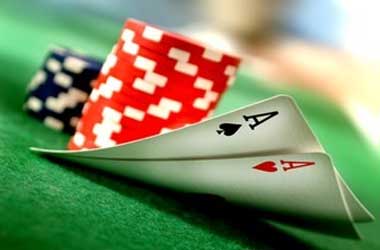 If you’re a poker player, then it’s quite probable that you’re aware of the different poker hands that you can make. However, if you’re a newcomer to this world, then chances are that you won’t be completely aware of the poker hands. That’s why it’s important for all newbies to read through this article on the subject. We’re going to explain each of the different hands here, so that you can learn more on how to make them and what sort of result they will bring. With this information in mind, you’ll be able to start playing poker and attempting to form such hands.
If you’re a poker player, then it’s quite probable that you’re aware of the different poker hands that you can make. However, if you’re a newcomer to this world, then chances are that you won’t be completely aware of the poker hands. That’s why it’s important for all newbies to read through this article on the subject. We’re going to explain each of the different hands here, so that you can learn more on how to make them and what sort of result they will bring. With this information in mind, you’ll be able to start playing poker and attempting to form such hands.
Of course, each different variation of poker has different rules, so you’ll need to inform yourself of such rules depending upon which game you choose to play. However, in all instances, the idea is to try and form the highest hand that you possibly can. Some of the time, you can utilise the cards that you’ve been dealt, as well as cards that can be found in the middle of the poker table. So, let’s find out what the different hands are, in order from lowest to highest.
The Poker Hands
- High Card. This is the lowest possible hand to play with, because it simply utilises the highest card that you have in your set. So, if you’ve got five cards to go from and the highest one of them all is a 10 of Spades, this is what works as the High Card hand. Obviously, this is changeable due to the fact that the highest card in your hand could be a 7 of Hearts or 6 of Clubs, for example. In this instance, it’s often not worth playing such a hand and folding. Each high card hand is ranked by the highest card of the pack, followed by the rank of its second highest, then third and so on.
- The explanation of this hand is very much understandable from its title. You simply need to match up two cards of the same rank. For example, if you have a hand with an 8 of Diamonds, 8 of Hearts, 4 of Spades, 2 of Clubs and Ace of Diamonds, then the two eights form the pair.
- Two Pair. Again, this one follows on from the single pair hand, just because it works in the same way, except with two of the same ranking cards. Obviously, it’s slightly more difficult to find two pairs in your hand, which is why it ranks above the single pair hand.
- Three of a Kind. Should you manage to make up a hand of three cards with the same rank, then you’ve got a three of a kind set. Therefore, let’s say that you’ve got a Jack of Spades, Jack of Hearts and Jack of Clubs alongside a 7 of Diamonds and a 3 of Hearts, the three Jack cards form this hand. This is also known as trips or a set. Additionally, in community card games like Texas Hold’em Poker, three of a kind is called a set only when it comprises a pair from your dealt hand and a third card from the table.
- If you hold a hand that comprises five cards in sequential rank, this is known as a Straight. The cards are not all of the same suit in this instance, so if you have the 6 of Clubs, 7 of Diamonds, 8 of Clubs, 9 of Hearts and 10 of Spades as your hand, then this is what makes up the Straight. As part of a Straight hand, the Ace is able to rank as either a high card or a low one.
- This hand comprises a set of five cards from the same suit, but they don’t have to be in sequence. Therefore, should all of your cards be from the Diamonds suit, you’ve got yourself a handy Flush. If you’re playing a game of ace-to-five low rules, flush hands are not recognised.
- Full House. If you are able to make up a hand that comprises Three of a Kind with a Pair, this represents the Full House hand. Let’s say that you’ve got the 9 of Hearts, 9 of Clubs and 9 of Diamonds along with the 7 of Spades and 7 of Hearts, this is very much a Full House offering. This hand can also go by the name of Full Boat or Tight.
- Four of a Kind. Again, this hand is quite self-explanatory, existing in the same way as the Three of a Kind, but with four cards instead. That being the case, you will need to have all four of the same rank cards from each of the four suits. Naturally, you’ll have a single spare card of an alternate rank and suit to make up the five.
- Straight Flush. We’re very much into the remaining two high hands, starting with the Straight Flush. This hand consists of five cards in a sequence, all in the same suit. So, let’s say that everything is Spades and you’ve got the 8, 9, 10, J and Q of this suit. This makes up the Straight Flush outcome. As part of such a sequence, the Ace card can rank either high or low again. There are several additional rules to this hand though. Under deuce-to-seven low rules, Ace cards can only rank high. In the ace-to-six low rules, Aces can only rank low. And finally, under ace-to-five low rules, the Straight Flush hand is not recognised.
- Royal Flush. This works in exactly the same way as the Straight Flush, but with the high cards making up the hand. Therefore, it needs to be 10, J, Q, K and A all in the same suit to be possible. This is the very best possible hand that you can create, when not using wild cards. If you are utilising wild cards in a poker game, then the highest hand is the Five of a Kind. This is possible when a joker makes up a wild card in the poker game, which can represent any other playing card.




